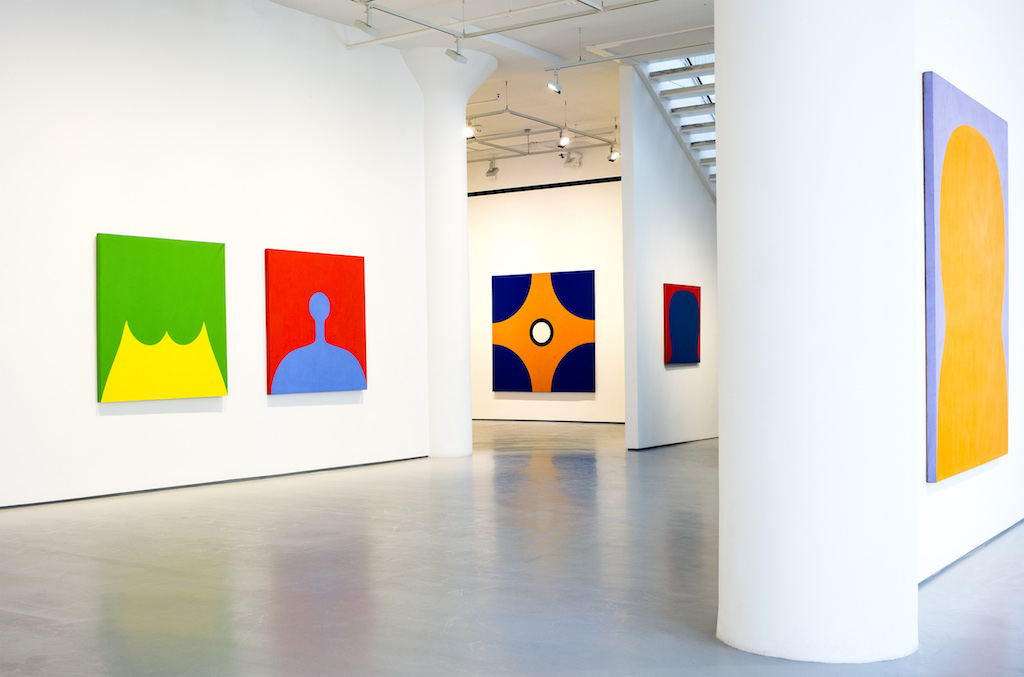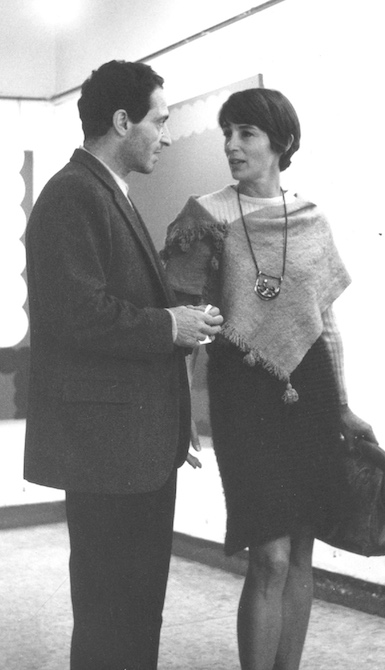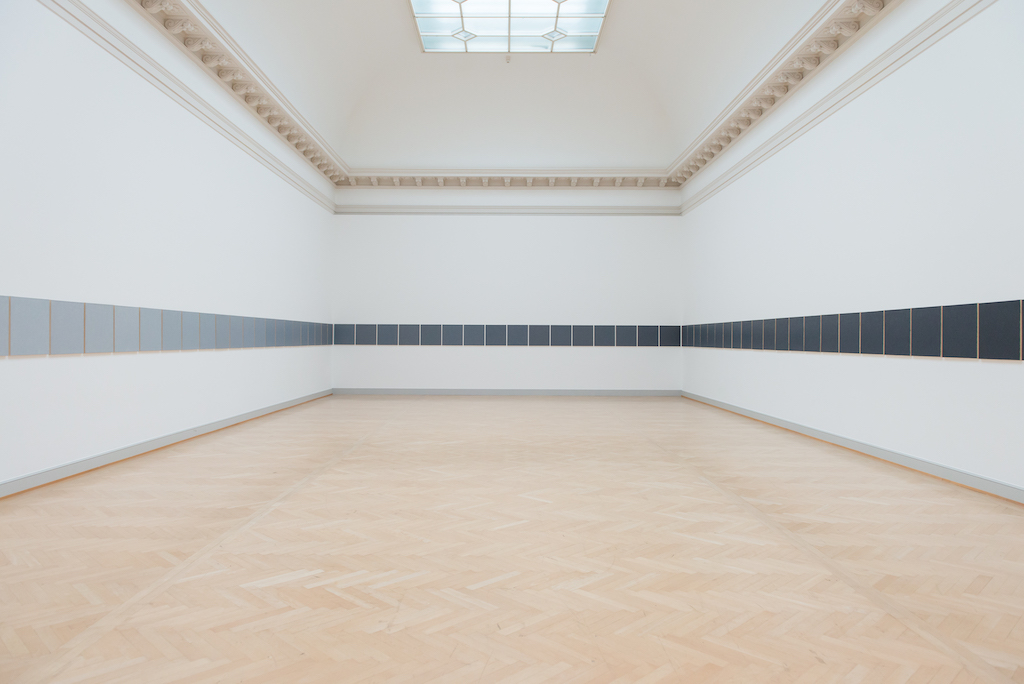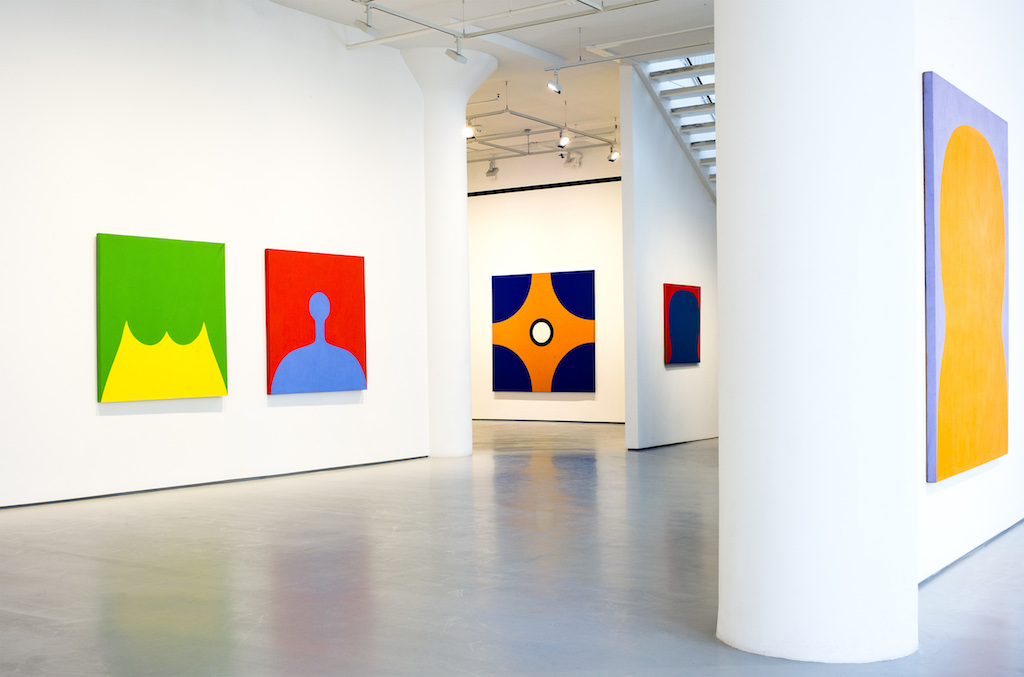[ad_1]

Installation view of ‘Marcia Hafif: The Italian Paintings, 1961-1969,’ Fergus McCaffrey, New York, 2016.
©MARCIA HAFIF/COURTESY FERGUS MCCAFFREY, NEW YORK
By the mid-1960s, it was assumed in some circles that all of the possibilities for painting were exhausted—that the medium had, more or less, died. But some painters pushed back against that idea, arguing that painting could reset itself, and one was Marcia Hafif. In an essay published in Artforum in 1978 called “Beginning Again,” Hafif wrote, “If one phase of this period of analysis is coming to an end, we may be ready to enter still another phase of abstraction, a synthetic period.” Over the course of her career, she continued a quest to propel painting into that new, synthetic period, often achieving awe-inspiring results.
Hafif, who has, for the past five decades, created monochromes or near-monochromes that investigate the structures that undergird painting itself, has died, according to Fergus McCaffrey gallery, which represents her in New York and Tokyo, and Franklin Parrasch Gallery, which represents her in New York and Los Angeles. She was 89.
Hafif was overlooked by many art institutions for much of her career, only to be recently rediscovered and hailed as one of the essential painters working during a time when her chosen medium was considered highly unfashionable. Her paintings were included in the 2014 edition of the Hammer Museum’s Made in L.A. biennial, and in the past few years, she had major solo exhibitions at the Kunsthaus Baselland and the Kunstmuseum St. Gallen in Switzerland, and at the Laguna Art Museum in Laguna Beach, California. A 100-work survey of Hafif’s work is currently planned to open this September at the Pomona College Museum of Art in Claremont, California.

Marcia Hafif and Sandro Nitoglia, Rome, 1968.
©MARCIA HAFIF/COURTESY FERGUS MCCAFFREY, NEW YORK
“As is common with so many of the great American artists of her generation, Marcia’s work found favor first in Europe,” Fergus McCaffrey said in a statement. “Her ‘Italian Paintings, 1961–69’ exhibition in New York in 2016 provoked deep institutional soul-searching as to how such an important body of work by an American artist had remained unrecognized for so long. There is so much more for America to come to terms with. I will miss Marcia’s gentle laugh and steely certainty.”
Hafif brought a sly sense of invention to bear on the well-worn trope of the monochrome. In 2015, Hafif told ARTnews that she had “hit another brick wall” when she started thinking about painting. “Where can you go with abstract painting at this point?” she recalled thinking at the time. Her solution was an unusual one. Before creating one of her canvases, she would choose the brushes, paint, and supports she was going to use, and only then would get to work on a new piece. The result was a compromise between the aesthetics of Abstract Expressionism and Minimalism—a type of abstraction that was at once programmatic and personal, at once critical of what makes a painting and also pure. (As if to subvert the idea of paintings as great, important things, she frequently referred to her work as her “Inventory.”)
“She was very involved in Buddhist thought and the idea of repetition,” Parrasch told ARTnews. Her continual layering on of strokes was not repetition for its own sake, he said, but “repetition leading to things. Her whole process is very Zen, and it’s very much about joy and pleasure, the focus of that stroke and repeating it over and over. She had an incredible sense of presence when she was painting.” He added, “She’s a very sensual person—I don’t think that should go unmentioned. Everything, for her, was about the appreciation of the beauty of things.”
Her work experimented not just with the conventions of painting, but also with the many ways artists could apply paint to a canvas. Her “Splash Paintings,” a series she began in 2009, were monochromes with paint flecked onto them that resembled sprays of water resulting from ocean waves hitting the shore. For Hafif, who was a colorist at heart, the paintings referred to the work of Fra Angelico and Piero della Francesca and their use of blue hues to mimic natural states. And in her “Shade Paintings,” a brightly colored series of monochromes, she made use of a technique known as scumbling, in which thin coats of opaque paint are applied to a canvas to make it appear to shimmer.

Installation View of An Extended Gray Scale (1972–73) at Kunstmuseum St. Gallen, Switzerland, 2018.
©MARCIA HAFIF/COURTESY KUNSTMUSEUM ST. GALLEN, SWITZERLAND
Hafif was born in 1929 in Pomona, California. She initially thought she might want to be an art historian, and even went on to study the field briefly at Pomona College during the late 1940s. But she soon realized that historians at the time didn’t study what is now termed “contemporary art,” and so she decided to take a different route. “I realized I wasn’t an art historian, but an artist,” she told the Los Angeles Times in 2015. Her exhibition at the college’s art museum represents a homecoming, said Rebecca McGrew, the institution’s senior curator, who is currently organizing the Hafif show.
“Bringing her back to campus on multiple occasions over the last few months meant so much to her and to me to see her reflect back on the fullness of her life in Claremont,” McGrew said in a statement. “It was an immense pleasure to spend numerous sun-filled days at her beautiful home in Laguna Beach planning our exhibition and book. We collaborated at every step of the process, and the opportunity to talk in-depth about her work, art, and so many wide-ranging topics was an experience I will never forget. It has been an honor to work so closely with an artist in such command of her vision for her artwork, her life, and her legacy.”
After college, Hafif immersed herself in the Los Angeles art world at the time—during the ’50s, she was an occasional assistant for Ferus Gallery, the space founded by Walter Hopps and Edward Keinholz, which was the nucleus for a core segment of the avant-garde in California. In 1961, Hafif moved to Rome, where she produced canvases featuring lumpy forms against bright backgrounds. They resemble Ken Price’s sculptures by way of Ellsworth Kelly’s minimalist plays with perception. Feeling nostalgic for an American sensibility, however, she departed for the United States in 1969 and became a student in the M.F.A. program at the University of California, Irvine. She left for New York shortly thereafter, and found that there was an intense bias against painting at the time in the city. Hafif soon decided to think of ways to think about the materiality of paintings themselves—what went into them and how they were made.
Sometimes, Hafif’s works exceeded the traditional definition of painting. For the seminal 1976 exhibition “Rooms” at the P.S.1 Contemporary Art Center in Queens, she created Schoolroom, a gallery-size installation in which Hafif carefully scrawled an erotic text in chalk on blackboards. It referred to her stint as a third-grade teacher, and was recently put back on view at MoMA PS1 as part of an exhibition called “Forty” that payed homage to the institution’s history. She also produced videos, such as one called Letters to J-C Broadway, 1999, #10 (1999), in which a voice speaks over footage of pedestrians walking around New York City.
Up until the end of her career, Hafif continued working. “I’m still painting,” she told ARTnews in 2015. But she added that she wasn’t done being critical of painting, either: “I’m just not painting a subject, other than the painting itself.”
[ad_2]
Source link

